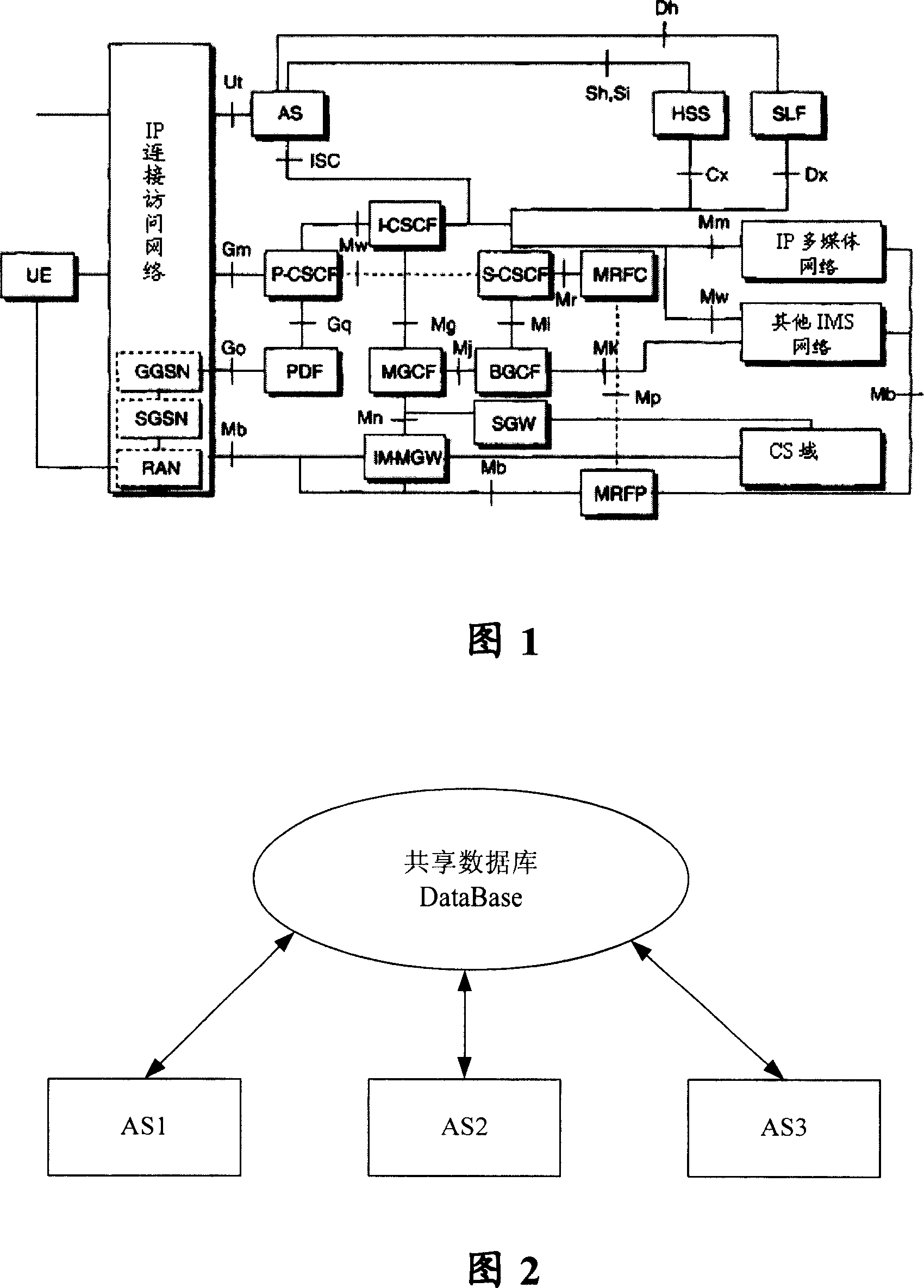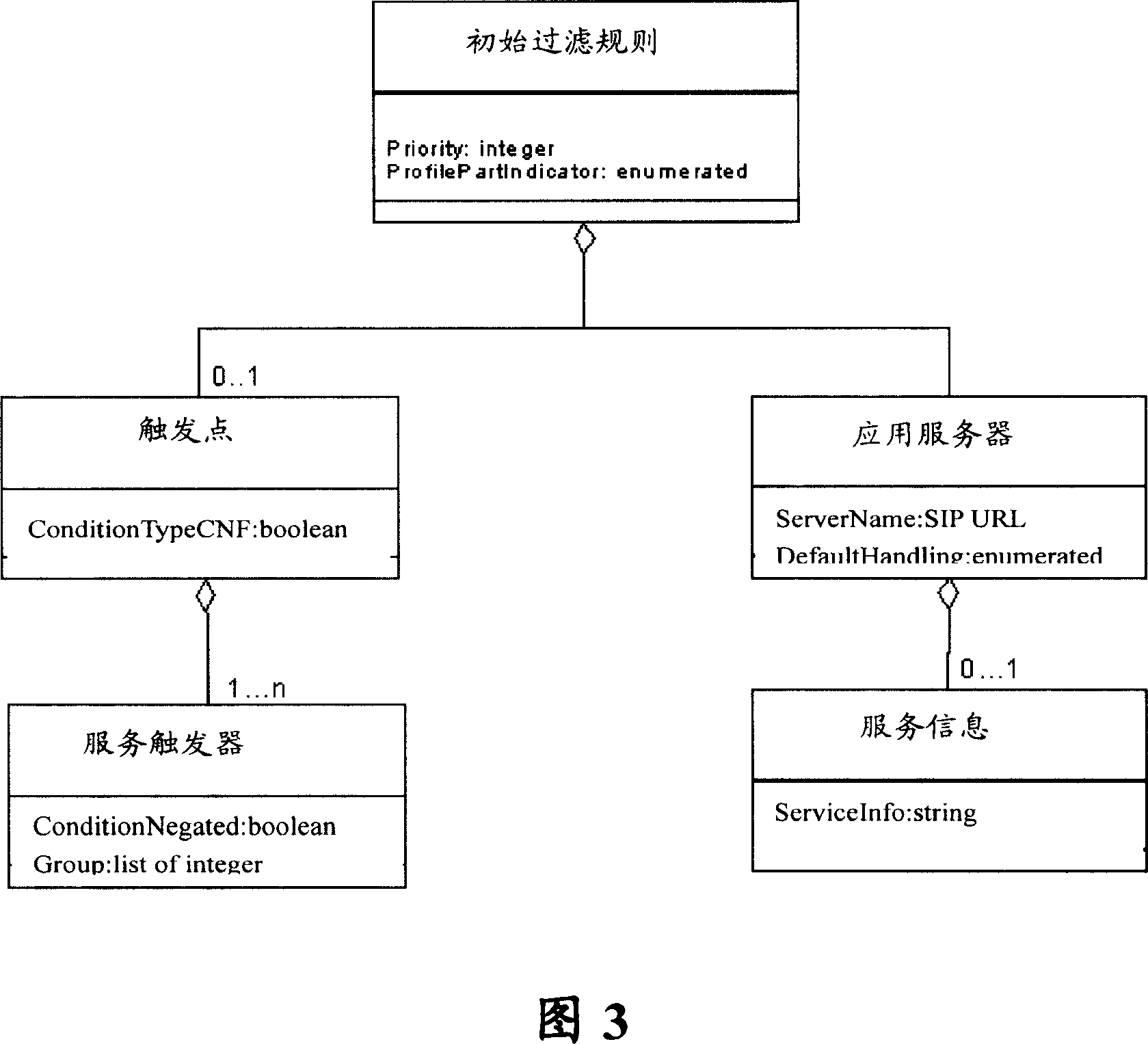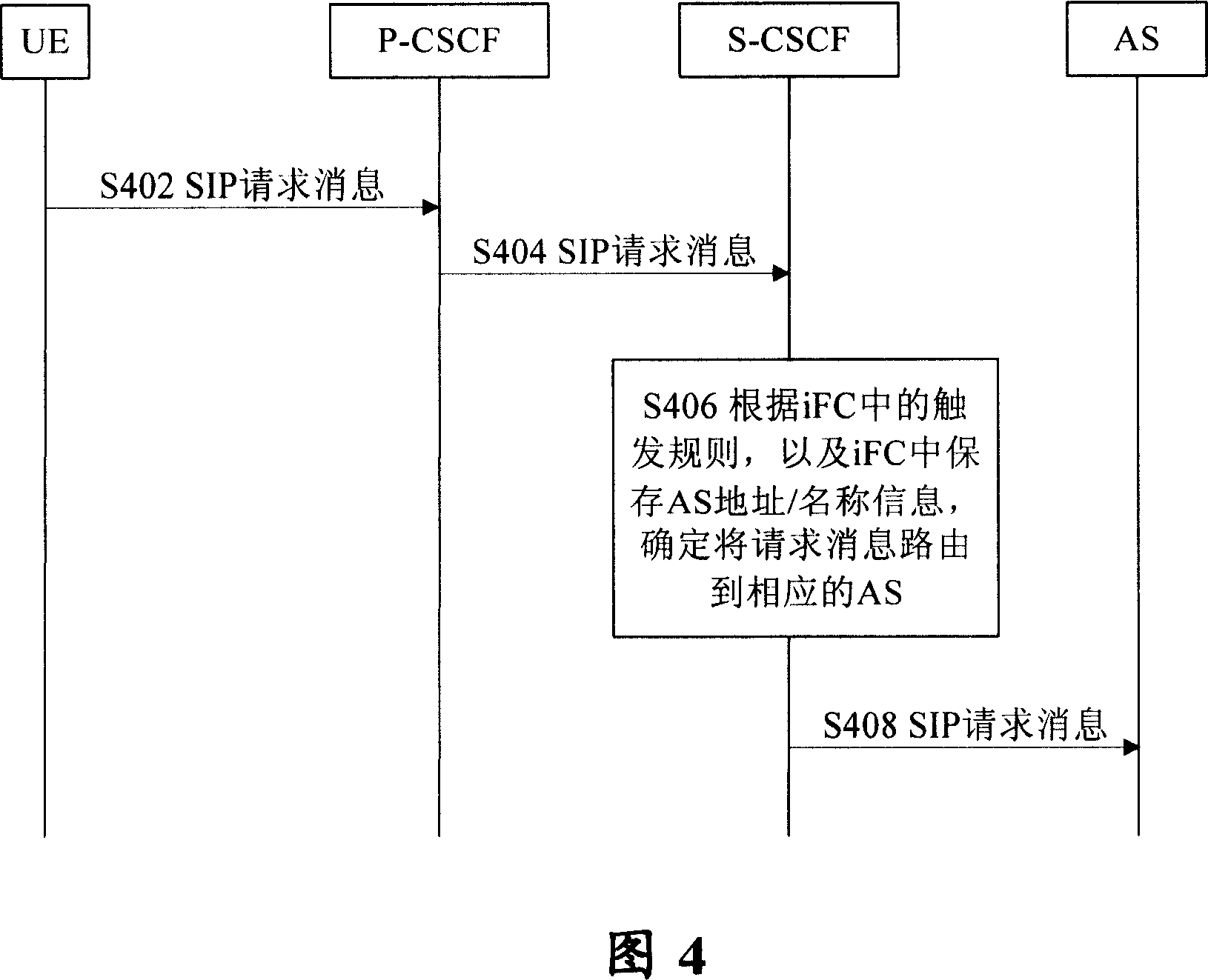Application server distribution method and device
A technology of application server and distribution method, applied in the field of application server distribution method and application server distribution device, can solve the problems of low efficiency, heavy load of proxy application server, heavy workload of network management configuration, etc., so as to improve system efficiency and reduce workload volume effect
- Summary
- Abstract
- Description
- Claims
- Application Information
AI Technical Summary
Problems solved by technology
Method used
Image
Examples
no. 1 example
[0086] Fig. 11 shows a flow chart of application server assignment when a user needs a third-party registration according to an embodiment of the present invention. As shown in Figure 11, when the user needs a third-party registration, the application server allocation includes the following steps:
[0087] In step S1102, a normal IMS network UE registration process is performed.
[0088] Step S1104, after the user registration is successful, the S-CSCF performs business logic control according to the initial filtering rules downloaded from the HSS and finds that third-party registration is required.
[0089] In step S1106, the initial filtering rule matched with the third-party registration records the SIP URLs of several application servers, and the S-CSCF selects an application server in the application server address list according to the configured policies or rules thereon. Among them, these policies and rules can be formulated by the operator, or they can be the person...
no. 2 example
[0093] FIG. 12 shows a flow chart of implementing application server allocation for user origination services according to an embodiment of the present invention. As shown in Figure 12, the following steps are included:
[0094] In step S1202, the user sends an initial call request and sends a SIP Invite message to the P-CSCF to which it is connected.
[0095] In step S1204, the P-CSCF routes the SIP Invite message received from the user to the S-CSCF selected when the user registered. If the user is not registered but the user has signed an unregistered service, the existing The network selects an S-CSCF for the user to process the user's service request.
[0096] Step S1206, after receiving the SIP Invite message, the S-CSCF performs service logic control according to the initial filtering rules in the user subscription information saved therein, and searches for the initial filtering rules matching this service request.
[0097] Step S1208, when the S-CSCF finds a matchin...
no. 3 example
[0102] Fig. 13 shows the process of implementing application server allocation for user termination service according to an embodiment of the present invention. As shown in Figure 13, the process of implementing application server allocation for the user terminal call service includes the following steps:
[0103] In step S1302, the opposite end initiates a service request to the user, and the SIP Invite message is routed to the S-CSCF providing the service for the user.
[0104]Step S1304, after the S-CSCF receives the SIP Invite message, it can know that the service request is an origination request according to the content of the header field of the message, and do it according to the initial filter rule in the user subscription information stored on it. Business logic control, looking for the initial filtering rules that match this business request.
[0105] Step S1306, when the S-CSCF finds a matching initial filtering rule, it finds several application server SIPURLs st...
PUM
 Login to View More
Login to View More Abstract
Description
Claims
Application Information
 Login to View More
Login to View More - R&D
- Intellectual Property
- Life Sciences
- Materials
- Tech Scout
- Unparalleled Data Quality
- Higher Quality Content
- 60% Fewer Hallucinations
Browse by: Latest US Patents, China's latest patents, Technical Efficacy Thesaurus, Application Domain, Technology Topic, Popular Technical Reports.
© 2025 PatSnap. All rights reserved.Legal|Privacy policy|Modern Slavery Act Transparency Statement|Sitemap|About US| Contact US: help@patsnap.com



